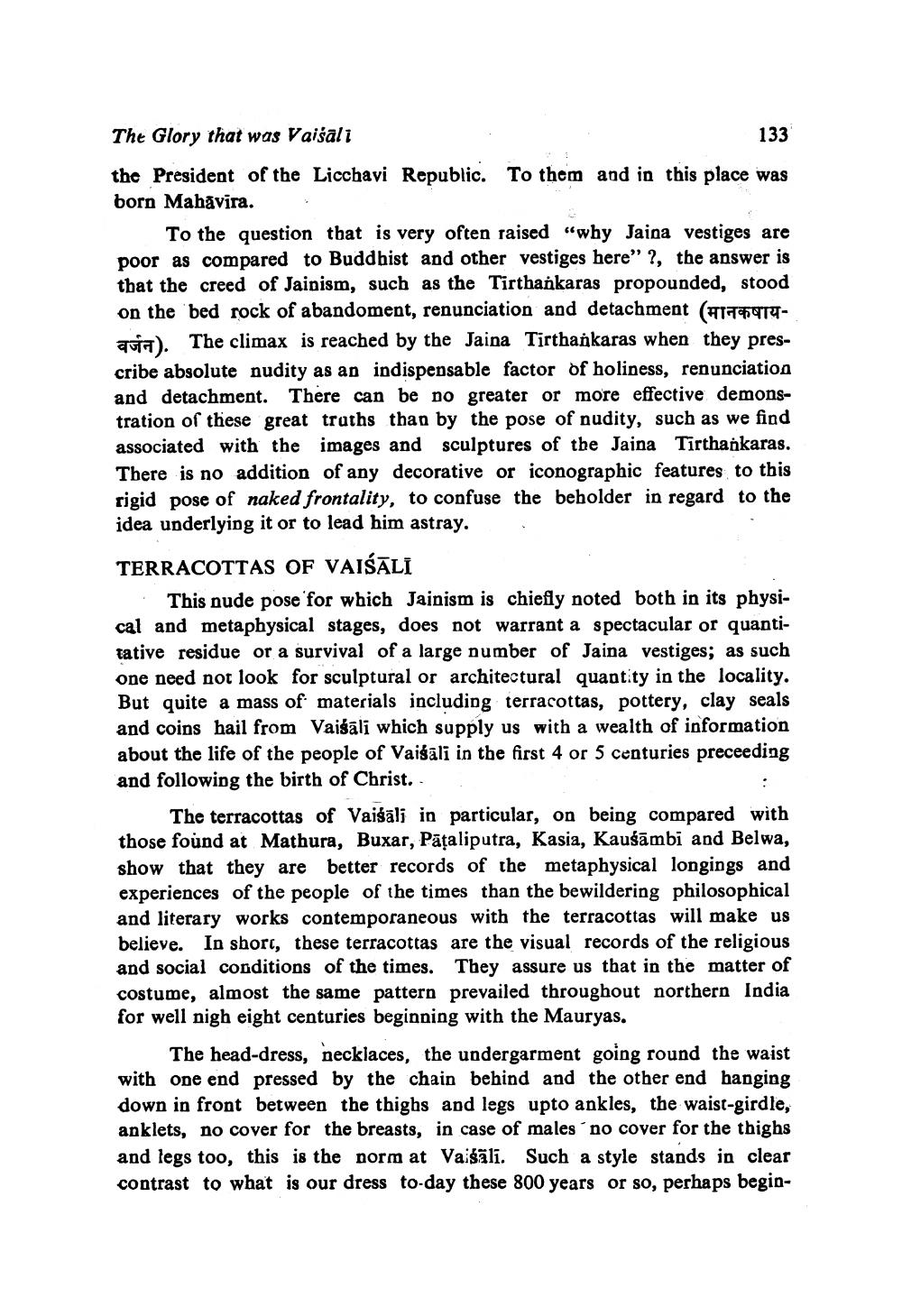________________ The Glory that was Vaisali 133 the President of the Licchavi Republic. To them and in this place was born Mahavira. To the question that is very often raised "why Jaina vestiges are poor as compared to Buddhist and other vestiges here" ?, the answer is that the creed of Jainism, such as the Tirthankaras propounded, stood on the bed rock of abandoment, renunciation and detachment (17914au). The climax is reached by the Jaina Tirthankaras when they prescribe absolute nudity as an indispensable factor of holiness, renunciation and detachment. There can be no greater or more effective demonstration of these great truths than by the pose of nudity, such as we find associated with the images and sculptures of the Jaina Tirthankaras. There is no addition of any decorative or iconographic features to this rigid pose of naked frontality, to confuse the beholder in regard to the idea underlying it or to lead him astray. TERRACOTTAS OF VAISALI This nude pose for which Jainism is chiefly noted both in its physical and metaphysical stages, does not warrant a spectacular or quantitative residue or a survival of a large number of Jaina vestiges; as such one need not look for sculptural or architectural quantity in the locality. But quite a mass of materials including terracottas, pottery, clay seals and coins hail from Vaisali which supply us with a wealth of information about the life of the people of Vaisali in the first 4 or 5 centuries preceeding and following the birth of Christ. The terracottas of Vaisali in particular, on being compared with those found at Mathura, Buxar, Pataliputra, Kasia, Kausambi and Belwa, show that they are better records of the metaphysical longings and experiences of the people of the times than the bewildering philosophical and literary works contemporaneous with the terracottas will make us believe. In short, these terracottas are the visual records of the religious and social conditions of the times. They assure us that in the matter of costume, almost the same pattern prevailed throughout northern India for well nigh eight centuries beginning with the Mauryas. The head-dress, necklaces, the undergarment going round the waist with one end pressed by the chain behind and the other end hanging down in front between the thighs and legs upto ankles, the waist-girdle, anklets, no cover for the breasts, in case of males no cover for the thighs and legs too, this is the norm at Vaisali. Such a style stands in clear contrast to what is our dress to-day these 800 years or so, perhaps begin




